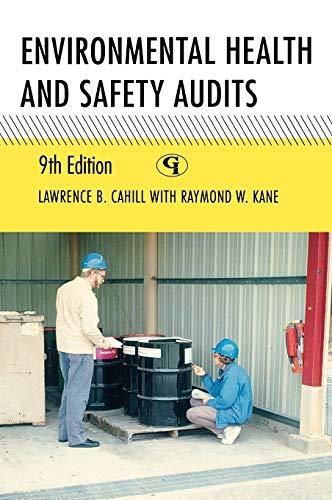Question
For Questions 4 and 5, round your answers to 2 decimal places. Note that full marks will be awarded only if ALL calculation steps are
For Questions 4 and 5, round your answers to 2 decimal places.
Note that full marks will be awarded only if ALL calculation steps are shown clearly.
Question 5 (20 marks)
- Two mutually exclusive alternatives are being evaluated, and their revenues and expenses are itemized in the table below. Suppose the MARR is 8% per year and the analysis period is 3 years, fill in the missing values of capital recovery and annual worth in the table for each alternative. Which alternative should be selected? [Include your answer of capital recovery in the calculation of the annual worth of each alternative. Show the annual worth equation which includes CR as one of its components.] (7 marks)
Alternatives
A
B
Capital investment (I)
$28,000
$55,000
Annual revenues (R)
$15,000
$13,000
Annual expenses (E)
$23,000
$28,000
Salvage value (S)
$6,000
$8,000
Useful Life
3 years
3 years
Capital recovery (CR)
Annual worth (AW)
CR of Alternative A:
AW of Alternative A:
CR of Alternative B:
AW of Alternative B:
Alternative____should be selected.
b. The following tables provide information of five mutually exclusive projects and their IRRs derived from the same service lives of 20 years. Using the method learned in Topic 8, explain the procedure to conduct the incremental investment analysis by filling in the given tables with the relevant information provided below. Which alternative should be chosen if MARR = 10% per year? (13 marks)

- Use only the relevant information given in the above tables to conduct the 3-step incremental investment analysis (by filling in the blanks below and in the tables).
Step 1: Include only the alternatives that satisfy the criterion of ____>=____
Fill in the last row of the first table to indicate whether the investment projects are economically justified or not.
Step 2: Arrange the alternatives in ____ order of their ____________________________ . .
Project ________is the base alternative.
Fill in the blanks in the table below. You may not need to fill in all columns.
| MARR = 10% | Project | |||||
|
|
|
|
|
|
| |
| Capital investment (millions) |
|
|
|
|
|
|
| Annual revenues less expenses (millions) |
|
|
|
|
|
|
| System life (years) |
|
|
|
|
|
|
| IRR on total cash flow |
|
|
|
|
|
|
Step 3: Given that the__________alternative is acceptable, we conduct the incremental analysis to decide whether moving on to______________________________alternative is economically justified.
Conduct the incremental analysis in the table below. You may not need to fill in all columns.

Based on the above incremental investment analysis, Alternative____ should be chosen.
A- D- E $4,000 $2,000 $6,000 $1,000 $9,000 $640 $4002 $7604 $1204 $7804 Capital investment (millions) Annual revenues less expenses (millions) System life (years) IRR on total cash flow Justified or not? (insert or "X" 20 20 20 20 20 15% 19% 11% 10% 6% A(A-B) A(B-D) A(C-B) (C-A) (A-D2 A(E-A) Increment considered IRRA 10% 28% 6% 2% 17% -5% [], [, 1 Base alternative and increment considered 18 2 3 4 5 6 72 8 98 10 11 12 13 14 15 16 172 18 19 20 IRR Justified or not? (insert */" or "x") T', 'T' 1 E | A- D- E $4,000 $2,000 $6,000 $1,000 $9,000 $640 $4002 $7604 $1204 $7804 Capital investment (millions) Annual revenues less expenses (millions) System life (years) IRR on total cash flow Justified or not? (insert or "X" 20 20 20 20 20 15% 19% 11% 10% 6% A(A-B) A(B-D) A(C-B) (C-A) (A-D2 A(E-A) Increment considered IRRA 10% 28% 6% 2% 17% -5% [], [, 1 Base alternative and increment considered 18 2 3 4 5 6 72 8 98 10 11 12 13 14 15 16 172 18 19 20 IRR Justified or not? (insert */" or "x") T', 'T' 1 E |Step by Step Solution
There are 3 Steps involved in it
Step: 1

Get Instant Access to Expert-Tailored Solutions
See step-by-step solutions with expert insights and AI powered tools for academic success
Step: 2

Step: 3

Ace Your Homework with AI
Get the answers you need in no time with our AI-driven, step-by-step assistance
Get Started


